| Navratri festival | |
|---|---|
 Navratri celebrates either Durga or Rama victory over an evil demon, depending on the region | |
| Also called | Durga Puja |
| Observed by | Hindus |
| Type | religious |
| Celebrations | 9 days |
| Observances | stage setting, prayers, plays, image immersion or bonfire |
| Begins | Ashvin Shukla Prathama |
| Ends | Ashvin Shukla Navami |
| 2018 date |
9 Oct, Tue – 17 Oct, Wed (Vijayadashami: 18 Oct, Thu) |
| 2019 date |
29 Sep, Sun - 8 Oct, Tue (Vijayadashami: 8 Oct, Tue) |
| Frequency | annual |
| Related to | Dussehra |
Navaratri (Sanskrit: ????????, literally "nine nights"), also spelled Navratri or Navarathri, is a nine nights (and ten days) Hindu festival, celebrated in the autumn every year. It is observed for different reasons and celebrated differently in various parts of the Indian subcontinent. Theoretically, there are four seasonal Navratri. However, in practice, it is the post-monsoon autumn festival called Sharada Navratri that is the most observed in the honor of the divine feminine Devi (Durga). The festival is celebrated in the bright half of the Hindu calendar month Ashvin, which typically falls in the Gregorian months of September and October.
In the eastern and northeastern states of India, the Durga Puja is synonymous with Navratri, wherein goddess Durga battles and emerges victorious over the buffalo demon to help restore Dharma. In the northern and western states, the festival is synonymous with "Rama Lila" and Dussehra that celebrates the battle and victory of god Rama over the demon king Ravana. In southern states, the victory of different goddesses, of Rama or Saraswati is celebrated. In all cases, the common theme is the battle and victory of Good over Evil based on a regionally famous epic or legend such as the Ramayana or the Devi Mahatmya.
Celebrations include stage decorations, recital of the legend, enacting of the story, and chanting of the scriptures of Hinduism. The nine days are also a major crop season cultural event, such as competitive design and staging of pandals, a family visit to these pandals and the public celebration of classical and folk dances of Hindu culture. On the final day, called the Vijayadashami or Dussehra, the statues are either immersed in a water body such as river and ocean, or alternatively the statue symbolizing the evil is burnt with fireworks marking evil's destruction. The festival also starts the preparation for one of the most important and widely celebrated holidays, Diwali, the festival of lights, which is celebrated twenty days after the Vijayadashami or Dussehra.
Contents
Etymology and nomenclature
The word Navratri means 'nine nights' in Sanskrit, nava meaning nine and ratri meaning nights.
Dates and celebrations
According to some Hindu texts such as the Shakta and Vaishnava Puranas, Navaratri theoretically falls twice or four times a year. Of these, the Sharada Navaratri near autumn equinox (September-October) is the most celebrated, and the Vasanta Navaratri near spring equinox (March-April) is next most significant to the culture of Indian subcontinent. In all cases, Navaratri falls in the bright half of the Hindu luni-solar months. The celebrations vary by region, leaving much to the creativity and preferences of the Hindu.
The other two navratris are observed regionally or by individuals:
- Magha Navaratri: in Magha (January–February), winter season. The fifth day of this festival is often independently observed as Vasant Panchami or Basant Panchami, the official start of spring in the Hindu tradition wherein goddess Saraswati is revered through arts, music, writing, kite flying. In some regions, the Hindu god of love, Kama is revered.
- Ashada Navaratri: in Ashadha (June–July), start of the monsoon season.
The Sharada Navratri commences on the first day (pratipada) of the bright fortnight of the lunar month of Ashvini. The festival is celebrated for nine nights once every year during this month, which typically falls in the Gregorian months of September and October. The exact dates of the festival are determined according to the Hindu luni-solar calendar, and sometimes the festival may be held for a day more or a day less depending on the adjustments for sun and moon movements and the leap year.
The festivities extend beyond goddess Durga and god Rama. Various other goddesses such as Saraswati and Lakshmi, gods such as Ganesha, Kartikeya, Shiva and Krishna are regionally revered. For example, a notable pan-Hindu tradition during Navratri is the adoration of Saraswati, the Hindu goddess of knowledge, learning, music and arts through Ayudha Puja. On this day, which typically falls on the ninth day of Navratri after the Good has won over Evil through Durga or Rama, peace and knowledge is celebrated. Warriors thank, decorate and worship their weapons, offering prayers to Saraswati. Musicians upkeep their musical instruments, play and pray to them. Farmers, carpenters, smiths, pottery makers, shopkeepers and all sorts of trades people similarly decorate and worship their equipment, machinery and tools of trade. Students visit their teachers, express respect and seek their blessings. This tradition is particularly strong in South India, but is observed elsewhere too.
To some, Navratri is a cultural and social festival which marks family time, along with the celebration of various performance arts. Navratri has been called the Hindu festival of dance.
Significance of Each Day
The festival is associated to the prominent battle that took place between Durga and demon Mahishasura and celebrates the victory of Good over Evil. These nine days are solely dedicated to Goddess Durga and her nine Avatars. Each day is associated to an incarnation of the goddess:
Day 1: Shailaputri
Known as Pratipada, this day is associated to Shailaputri( lit. Daughuter of Mountain), an incarnation of Parvati. It is in this form that the Goddess is worshiped as the consort of Shiva; she is depicted as riding a Bull, with a Trishul in her right hand and Lotus in left. Shailaputri is considered to be the direct incarnation of Mahakali. The color of the day is Red, which depicts action and vigor.
Day 2: Brahmcharini
On Dwitiya, Goddess Brahmcharini, another incarnation of Parvati, is worshiped. In this form, Parvati became Sati, her unmarried self. Brahmcharini is worshiped for emancipation or moksha and endowment of peace and prosperity. Depicted as walking bare feet and holding a japamala and kamandalu in her hands, she symbolizes bliss and calm. The color of the day is Royal Blue which depicts calmness-cum-energy.
Day 3: Chandraghanta
Tritiya commemorates the worship of Chandraghanta- the name derived from the fact that after marrying Shiva, Parvati adorned her forehead with half-chandra(lit. moon). She is the embodiment of beauty and is also symbolic of bravery, and hence, the color of the day is Yellow.
Day 4: Kushmunda
Goddess Kushmunda is worshiped on Chaturthi. Believed to be the creative power of universe, Kushmunda is associated to the endowment of vegetation on earth and hence, the color of the day is Green. She is depicted as having eight arms and sits on a Lion.
Day 5: Skandmata
Skandmata, the goddess worshiped on Panchami, is the mother of Skand(or Kartikeya). The color Grey is symbolic of the transforming strength of a mother when her child is confronted to dangers. she is depicted riding a ferocious Lion, having four arms, and holding her baby.
Day 6: Katyayani
Born to a sage, Katya, she is an incarnation of Durga and is shown to exhibit courage which is symbolized by the color Orange. Known as the warrior goddess, she is considered one of the most violent forms of Goddess Parvati. In this avatar, the Devi rides a lion and has four hands.
Day 7: Kalratri
Considered the most ferocious form of Goddess Durga, Kalaratri is revered on Saptmi. It is believed that Parvati removed her fair skin to kill the demons Sumbh and Nisumbh. The color of the day is White. Her skin turns black.
Day 8: Mahagauri
Mahagauri symbolizes intelligence and peace. The color associated to this day is Pink which depicts optimism.
Day 9: Sidhidatri
On the last day of the festival also known as Navami, people pray to Siddhidaatri. Sitting on a lotus, she is believed to possess and bestows all type of Siddhis. Here she has four hands. Also known as Saraswati Devi.
Regional practices
Navaratri is celebrated in different ways throughout India. Some fast, others feast. Some revere the same Mother Goddess but different aspects of her, while others revere avatars of Vishnu, particularly of Rama. The Chaitra Navaratri culminates in Rama Navami on the ninth day, and the Sharada Navaratri culminates in Durga Puja and Dussehra.
The Rama Navami remembers the birth of Rama, preceded by nine days of Ramayana recital particularly among the Vaishnava temples. In the past, Shakta Hindus used to recite Durga's legends during the Chaitra Navaratri, but this practice around the spring equinox has been declining. For most contemporary Hindus, it is the Navaratri around the autumn equinox that is the major festival and the one observed. To Bengali Hindus and to Shakta Hindus outside of eastern and northeastern states of India, the term Navaratri implies Durga Puja in the warrior goddess aspect of Devi. In other traditions of Hinduism, the term Navaratri implies something else or the celebration of Hindu goddess but in her more peaceful forms such as Saraswati – the Hindu goddess of knowledge, learning, music and other arts. In Nepal, Navaratri is called Dasain, and is a major annual homecoming and family event that celebrates the bonds between elders and youngsters with Tika Puja, as well as across family and community members.
Eastern India and West Bengal

Request Movie Now
Watch movie Navratri online on Amazon
Watch movie Navratri online
Watch The Movie On PrimeZulmi Full HD Movie Download
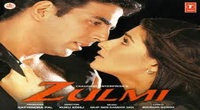
Do Fantoosh (1994) Full HD Movie Download
.jpg)
Khuda Kasam (1981) Full HD Movie Download
.jpg)
Chase Full HD Movie Download

Bazaar (1982) Full HD Movie Download
.jpg)
Jaan Hatheli Pe Full HD Movie Download
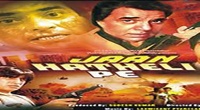
Tumaku Parunita Bhuli Full HD Movie Download
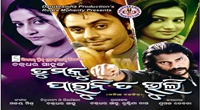
Hitler and the Nazis Part 3 Full HD Movie Download

Summer School Full HD Movie Download

Saptapadi Full HD Movie Download
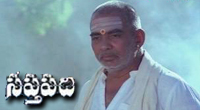
Chal Gajya Karu Majaa Full HD Movie Download
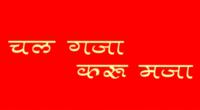
Jai Shree Ganesh Full HD Movie Download
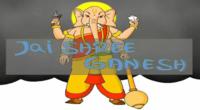
Krishna Sudama Full HD Movie Download
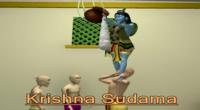
Bharthavudyogam Full HD Movie Download
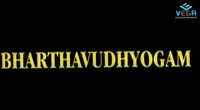
Mrugaya Full HD Movie Download
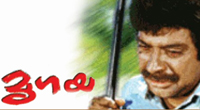
Pelli Kanuka Full HD Movie Download
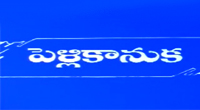
Mandupatara Full HD Movie Download
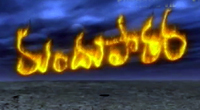
Sangeetha Laxmi Full HD Movie Download
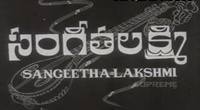
Security Full HD Movie Download

Peda Rasi Pedamma Katha Full HD Movie Download
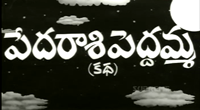
Shuddh Desi Romance (2013) Full HD Movie Download
.jpg)
Download latest Movie from bollywood
- 1> baaghi 3
- 2> THE SKY IS PINK MOVIE FULL STORY AND REVIEW
- 3> Luka Chuppi
- 4> TO ALL THE BOYS I’VE LOVED BEFORE
- 5> Kabir Singh
- 6> Street Dancer 3D
- 7> Simmba
- 8> Gone Girl
- 9> The Girl Who Lived
- 10> Ludo
- 11> DILWALE DULHANIA LE JAYENGE
- 12> GUILTY
- 13> The Godfather
- 14> Adventures of Rusty
- 15> Sooryavanshi
- 16> Satyameva Jayate 2
- 17> Thappad
- 18> Bhool Bhulaiyaa 2
- 19> KGFChapter 2
- 20> Mardaani 2
- 21> Pinjar
- 22> Shivaji maharaj
- 23> Ek Villian 2
- 24> Hungama 2
- 25> Divergent
- 26> Mumbai Saga
- 27> The Internship
- 28> HIT (telugu)
- 29> Panga
- 30> The perfect date
- 31> 16 December
- 32> Gopala Gopala (Telugu)
- 33> Brahmastra
- 34> Gangubai Kathiawadi
- 35> Manmadhudu
- 36> Nenu local
- 37> Mahanati
- 38> Shatamanam bavathi
- 39> Lagaan
- 40> After
- 41> MOM
- 42> Shamshera
- 43> Raguvaran BTech
- 44> Khakee
- 45> The villain
- 46> OM
- 47> Mr. perfect
- 48> Bueatifull mind
- 49> Hichki
- 50> Gabbar Singh
- 51> Jogi
- 52> Before Sunrise
- 53> Before Sunset
- 54> Before Midnight
- 55> The Big Bull
- 56> Top Gun: Maverick
- 57> The Purge
- 58> The Sky is Pink
- 59> Laxmmi Bomb
- 60> Sadak 2
- 61> Sufna
- 62> Prithviraj
- 63> PK
- 64> Coolie No 1(2020)
- 65> Black Widow
- 66> Dear Zindagi
- 67> Dil Bechara
- 68> PHIR HERA PHERI
- 69> WAR
- 70> Dostana
- 71> RRR: Roudram Ranam Rudhiram
- 72> Maidan
- 73> Dabbang 3
- 74> Chhalaang
- 75> life as we know it
- 76> SherShaah
- 77> Sandeep Aur Pinky Faraar
- 78> Event Horizon
- 79> 83
- 80> Radhe: Your Most Wanted Bhai
- 81> Gunjan Saxena: The Kargil Girl
- 82> Mr India
- 83> Vivah
- 84> Anokha Bandhan
- 85> Ghost
- 86> Bhoot: Part One - The Haunted Ship
- 87> Haseen Dilruba
- 88> Laal Singh Chaddha
- 89> Qismat
- 90> Rajput
- 91> Drive
- 92> Dil Chahta Hai
- 93> Dil Ki Baazi
- 94> Dil Ka Rishta
- 95> Teesri Manzil
- 96> Dil
- 97> Love Aaj Kal
- 98> Khaali Peeli
- 99> Bunty Aur Babli 2
- 100> Atrangi Re
- 101> Gulabo Sitabo
- 102> Jodi
- 103> Suraj Pe Mangal Bhari
- 104> Deewana
- 105> Attack
- 106> Sardar Udham Singh
- 107> Toofan
- 108> THE LOVEBIRDS
- 109> Jersey
- 110> Ginny Weds Sunny
- 111> Thalaivi
- 112> Shiddat
- 113> Angels vs Zombies
- 114> Koi Mil Gya
- 115> Thank God
- 116> Bhuj: The Pride of India
- 117> Hum Aapke Hain Kaun
- 118> The Platform
- 119> Bird Box
- 120> Roohi Afzana
- 121> Torbaaz
- 122> Nikamma
- 123> World War Z
- 124> Extraction
- 125> Train to Busan
- 126> Life of Pi
- 127> SHAADI MEIN JROOR AANA
- 128> Himmat Aur Mehnat
- 129> To All The Boys: P.S. I Still Love You
- 130> Mimi
- 131> Good Newwz
- 132> Shubh Mangal Zyada Saavdhan
- 133> Raabta
- 134> Harry Potter and the Philosopher's Stone
- 135> Harry Potter and the Chamber of Secrets
- 136> Chhapaak
- 137> War of the Worlds
- 138> Harry Potter and the Prisoner of Azkaban
- 139> Harry Potter and the Goblet of Fire
- 140> MURDER MYSTERY
- 141> Shakuntala Devi
- 142> Bachchan Pandey
- 143> Jayeshbhai Jordar
- 144> Sheer Qorma
- 145> Saina
- 146> 'O' Pushpa I hate tears
- 147> Kedarnath
- 148> MS Dhoni The Untold Story
- 149> Chhichhore
- 150> Badhaai Ho
- 151> Unstoppable
- 152> Oz the Great And Powerful
- 153> The Girl on the Train
- 154> Haathi Mere Saathi 2020
- 155> The Conjuring: The Devil Made Me Do It
- 156> Gandhi Se Pehle Gandhi
- 157> The Song of Scorpions
- 158> Srimanthudu
- 159> Hello Guru Prema Kosame
- 160> Beauty and The Beast
- 161> Black Panther
- 162> Charlie and the Chocolate Factory
- 163> Bole Chudiyan
- 164> Fidaa
- 165> Duvvada Jagannadham
- 166> Bruce Lee: The Fighter
- 167> Hyper
- 168> Yaara
- 169> Red (2020)
- 170> Shivam
- 171> That Is Mahalakshmi
- 172> Nishabdham
- 173> Aashram 2020 web series
- 174> Laxmii
- 175> Mismatched
- 176> STUDENT OF THE YEAR 2
- 177> NAIL POLISH
- 178> Ramprasad Ki Tehrvi
- 179> KAAGAZ
- 180> 12 o Clock
- 181> The Power
- 182> bolo hau
- 183> Tribhanga
- 184> JAMUN
- 185> Madam Chief Minister
- 186> Maasaab
- 187> Aadhaar
- 188> Tanhaji
- 189> Bhaagi 3
- 190> Bhootnath
- 191> MALANG
- 192> Jai Mummy Di
- 193> Haathi Mere Saathi 2021
- 194> Shakeela
- 195> Unpaused
- 196> Annayya
- 197> Vamsoddharakudu
- 198> Mrugaraju
- 199> Narasimha Naidu
- 200> Sankranti
- 201> Manasu Maata Vinadhu
- 202> Anjaane
- 203> Apaharan
- 204> Bachke Rehna Re Baba
- 205> Bewafaa
- 206> Roohi
- 207> Radhe
- 208> Zindagi Khoobsoorat Hai
- 209> Yeh Mohabbat Hai
- 210> Yeh Kya Ho Raha Hai?
- 211> The Tomorrow War
- 212> DehradunDiary
- 213> Meri Shaadi Karaoo
- 214> Matruu Ki Bijlee Ka Mandola
- 215> No One Killed Jesica
- 216> Aag Ka Goola
- 217> Eight Million Dollars
- 218> Three Hundred
- 219> Cats and Dog
- 220> Decoy
- 221> Gold Rush
- 222> You Have Got Mail
- 223> Final Destination three
- 224> Tofan
- 225> Jungle
Request for Download movie Navratri
- Bollywood movies
- Latest Bollywood movies
- Download all bengali movies
- Download all bhojpuri movies
- Download all english movies
- Download all gujarati movies
- Download all hindi movies
- Download all kannada movies
- Download all malayalam movies
- Download all marathi movies
- Download all oriya movies
- Download all punjabi movies
- Download all tamil movies
- Download all telugu movies
- Bollywood action movies
- Bollywood adventure movies
- Bollywood animation movies
- Bollywood classical movies
- Bollywood comedy movies
- Bollywood crime movies
- Bollywood devotional movies
- Bollywood documentary movies
- Bollywood drama movies
- Bollywood family movies
- Bollywood fantasy movies
- Bollywood historical movies
- Bollywood history movies
- Bollywood horror movies
- Bollywood musical movies
- Bollywood mystery movies
- Bollywood mythological movies
- Bollywood patriotic movies
- Bollywood romance movies
- Bollywood romantic movies
- Bollywood sci-fi movies
- Bollywood social movies
- Bollywood spiritual movies
- Bollywood sports movies
- Bollywood suspense movies
- Bollywood thriller movies
- Bollywood war movies
- Hot actress list
- Hot gujarati actress list
- Hot tamil actress list
- Hot bhojpuri actress list
- Hot assam actress list
- Hot bihari actress list
- Hot jammu and kashmir actress list
- Hot gujarati actress list
- Hot haryana actress list
- Hot konkani actress list
- Hot marathi actress list
- Hot odia actress list
- Hot punjabi actress list
- Hot rajasthani actress list
- Hot kannada actress list
- Hot malayalam actress list
- Hot telugu actress list
- Hot tulu actress list
- Hot Actress list from Indian city
- Hot actress list from ahmedabad
- Hot actress list from alappuzha
- Hot actress list from bangalore
- Hot actress list from bangalore
- Hot actress list from bhopal
- Hot actress list from chandigarh
- Hot actress list from chennai
- Hot actress list from guwahati
- Hot actress list from hyderabad, india
- Hot actress list from indore
- Hot actress list from jaipur
- Hot actress list from kannur
- Hot actress list from kochi
- Hot actress list from kolkata
- Hot actress list from kollam
- Hot actress list from kottayam
- Hot actress list from kozhikode
- Hot actress list from lucknow
- Hot actress list from madurai
- Hot actress list from mangalore
- Hot actress list from mumbai
- Hot actress list from mysore
- Hot actress list from new delhi
- Hot actress list from patna
- Hot actress list from pune
- Hot actress list from thiruvananthapuram
- Hot actress list from thrissur
- Hot actress list from tiruchirappalli
- Hot actress list from vijayawada
- Hot actress list from visakhapatnam
- All Bollywood Movies
- Bollywood Celeb
- >Art Director
- >Audiography
- >Background Music
- >Banner
- >Choreographer
- >Cinematographer
- >Costume Designer
- >Dialogue Writer
- >Director
- >Distributor
- >Editor
- >Executive Producer
- >Hair Stylist
- >Lyricist
- >Music Director
- >Photographer
- >Playback Singers
- >Presenter
- >Producer
- >Production Company
- >Production Designer
- >Screenplay
- >Singer
- >Sound
- >Actor
- >Story Writer
- >Studio
- >Video Director
- >Miscellaneous
- >Publicity (pro)
- >Web Creator
- >Production Labs
- >Publicity Design
- >Publicity Stills
- >Writer
- >Miscellaneous Artists
- >Visual Effects
- >Reporter
- >Music Company
- >Shooting Studios
- >Picturised On
- >Line Producer
- >Co Producer
- >Asst Director
- >Casting Director
- >Cinematography
- >Choreography
- >Dialouge
- >Editing
- >Lyrics
- >Music
- >Story
- >Playback Singer Female
- >Playback Singer Male
- >Actor In A Comic Role (male/female)
- >Child Artiste
- >Ensemble Cast
- >Actor Popular Choice (male)
- >Actor Popular Choice (female)
- >Sa Re Ga Ma Pa Song Of The Year
- >Actor In Supporting Role
- >Actress In Supporting Role
- >Actor In Leading Role
- >Art Direction
- >Actress In Leading Role
- >Sound Recording
- >Costume Design
- >Special Effects
- >Action
- >Actor In A Negative Role
- >Lifetime Achievement Award
- >Cinematic Exellence (director)
- >Cinematic Exellence (male)
- >Cinematic Exellence (female)
- >International Male Icon
- >International Female Icon
- >Actor In A Supporting Role (male)
- >Actor In A Supporting Role (female)
- >Actor In A Comic Role
- >Playback Singer (male)
- >Playback Singer (female)
- >Most Promising Debut (female)
- >Most Promising Debut (male)
- >Most Promising Director
- >Sound Design
- >Lifetime Jodi
- >Marketed Film
- >Jury Award For Best Actor
- >Jury Award For Best Actress
- >Jury Award For Best Film
- >Jury Award For Best Director
- >Playback Singer(male)
- >Lifetime Acheivement Award (male)
- >Excellence Award
- >Jodi Award
- >Performer Of The Year
- >Presented By